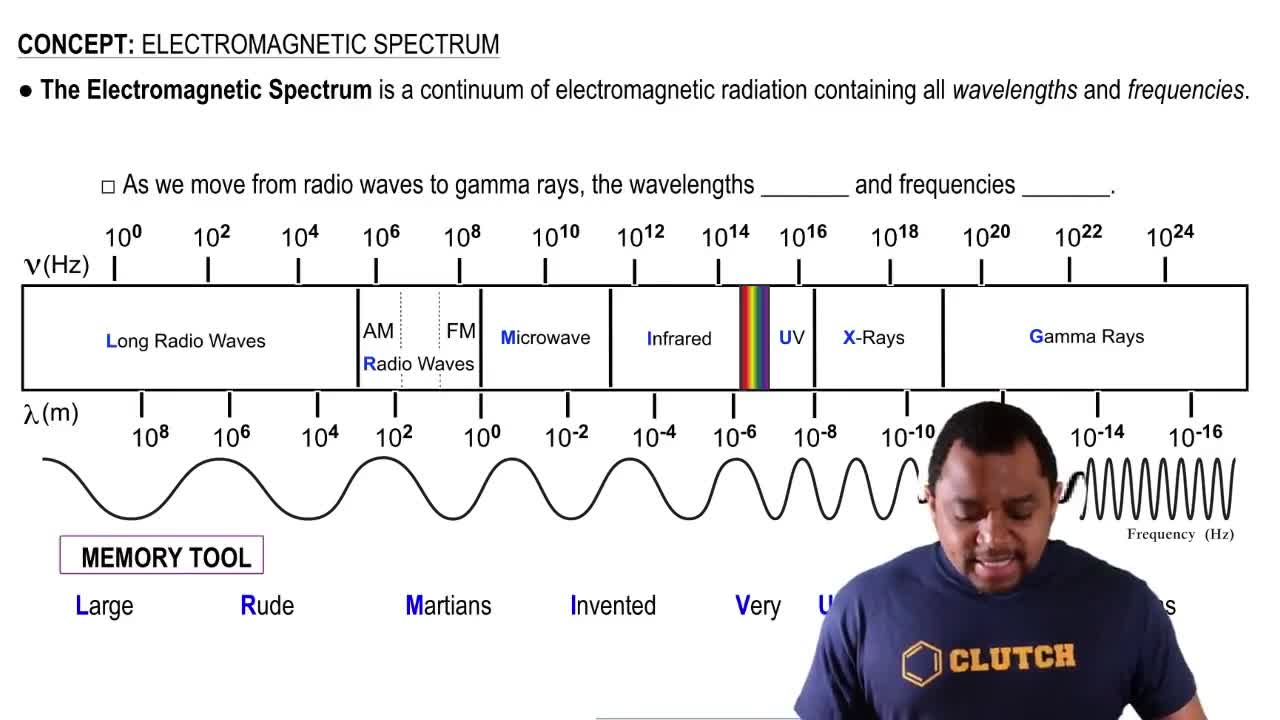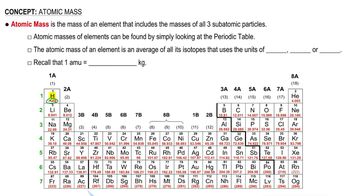The element lead (Pb) consists of four naturally occurring isotopes with atomic masses 203.97302, 205.97444, 206.97587, and 207.97663 amu. The relative abundances of these four isotopes are 1.4, 24.1, 22.1, and 52.4%, respectively. From these data, calculate the atomic weight of lead.

There are two different isotopes of bromine atoms. Under normal conditions, elemental bromine consists of molecules, and the mass of a molecule is the sum of the masses of the two atoms in the molecule. The mass spectrum of consists of three peaks: m/zRelative Peak Intensity157.836 0.2569 159.834 0.4999 161.832 0.2431
b. What is the mass of each isotope?
 Verified step by step guidance
Verified step by step guidance
Verified video answer for a similar problem:
Key Concepts
Isotopes

Mass Spectrum

Average Atomic Mass

Gallium (Ga) consists of two naturally occurring isotopes with masses of 68.926 and 70.925 amu. a. How many protons and neutrons are in the nucleus of each isotope? Write the complete atomic symbol for each, showing the atomic number and mass number. b. The average atomic mass of Ga is 69.72 amu. Calculate the abundance of each isotope.
There are two different isotopes of bromine atoms. Under normal conditions, elemental bromine consists of molecules, and the mass of a molecule is the sum of the masses of the two atoms in the molecule. The mass spectrum of consists of three peaks: m/zRelative Peak Intensity157.836 0.2569 159.834 0.4999 161.832 0.2431
a. What is the origin of each peak (of what isotopes does each consist)?
There are two different isotopes of bromine atoms. Under normal conditions, elemental bromine consists of molecules, and the mass of a molecule is the sum of the masses of the two atoms in the molecule. The mass spectrum of consists of three peaks: m/zRelative Peak Intensity157.836 0.2569 159.834 0.4999 161.832 0.2431
c. Determine the average molecular mass of a molecule.
There are two different isotopes of bromine atoms. Under normal conditions, elemental bromine consists of molecules, and the mass of a molecule is the sum of the masses of the two atoms in the molecule. The mass spectrum of consists of three peaks: m/zRelative Peak Intensity157.836 0.2569 159.834 0.4999 161.832 0.2431
d. Determine the average atomic mass of a bromine atom.
There are two different isotopes of bromine atoms. Under normal conditions, elemental bromine consists of molecules, and the mass of a molecule is the sum of the masses of the two atoms in the molecule. The mass spectrum of consists of three peaks: m/zRelative Peak Intensity157.836 0.2569 159.834 0.4999 161.832 0.2431
e. Calculate the abundances of the two isotopes.
